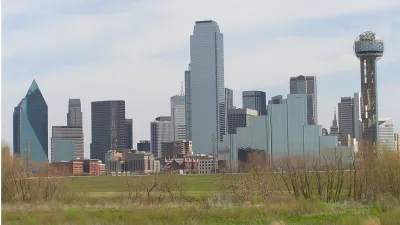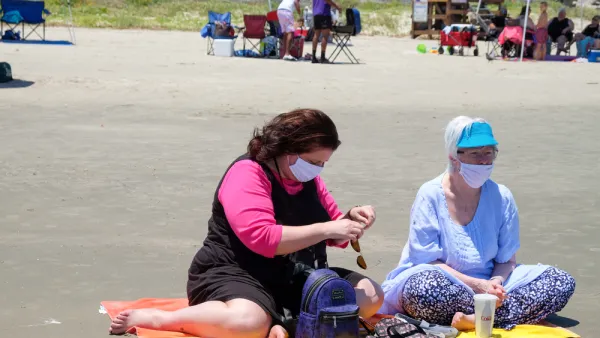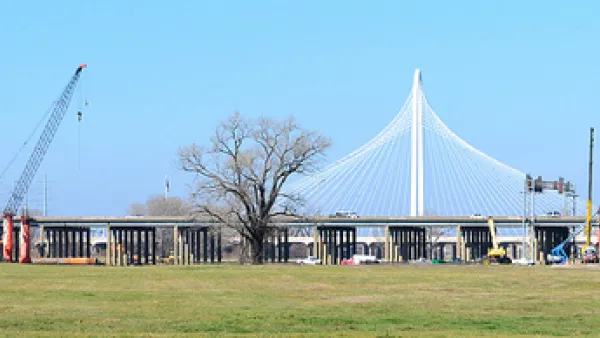Between 1990 and 2016, the Dallas-Fort Worth Metro Area added more jobs than New York City. The overwhelming majority of the new jobs are located in the suburbs.

Several large corporations have opened headquarters in the suburbs of the Dallas-Fort Worth area, the core city has not grown at the same pace. "Recent headlines about large corporate relocations and consolidations, led by the highly publicized moves of Toyota, Liberty Mutual, and State Farm, are just the latest wave of a long trend of employers choosing to locate outside Dallas’s city limits, particularly in Collin and Tarrant counties," W. Michael Cox and Richard Alm report in D Magazine. Companies choosing suburban locations is common in a number of metropolitan areas, but the disparity in Dallas is much larger than other cities around the state and the country. "The Austin, Houston, and San Antonio MSAs haven’t kept pace with DFW in net job creation since 1990. However, their core cities all added more than twice as many jobs as Dallas," Cox and Alm write.
There are number of different theories as to why the Dallas suburbs have pulled in more businesses than the city has. "Suburbs often offer an edge in cost, a key to any business. It starts with cheaper real estate. Taxes are likely to be lower, too. Suburban governments may be business-friendly, eager to bend over backwards to accommodate new employers by cutting red tape and offering financial incentives," Cox and Alm write. They also theorize that the core city is less attractive to many employees who might prefer to live in cities like Plano or Frisco.
FULL STORY: Why Dallas Hasn’t Gotten Its Share of DFW’s Employment Boom

National Parks Layoffs Will Cause Communities to Lose Billions
Thousands of essential park workers were laid off this week, just before the busy spring break season.

Retro-silient?: America’s First “Eco-burb,” The Woodlands Turns 50
A master-planned community north of Houston offers lessons on green infrastructure and resilient design, but falls short of its founder’s lofty affordability and walkability goals.

Delivering for America Plan Will Downgrade Mail Service in at Least 49.5 Percent of Zip Codes
Republican and Democrat lawmakers criticize the plan for its disproportionate negative impact on rural communities.

Test News Post 1
This is a summary

Test News Headline 46
Test for the image on the front page.

Balancing Bombs and Butterflies: How the National Guard Protects a Rare Species
The National Guard at Fort Indiantown Gap uses GIS technology and land management strategies to balance military training with conservation efforts, ensuring the survival of the rare eastern regal fritillary butterfly.
Urban Design for Planners 1: Software Tools
This six-course series explores essential urban design concepts using open source software and equips planners with the tools they need to participate fully in the urban design process.
Planning for Universal Design
Learn the tools for implementing Universal Design in planning regulations.
EMC Planning Group, Inc.
Planetizen
Planetizen
Mpact (formerly Rail~Volution)
Great Falls Development Authority, Inc.
HUDs Office of Policy Development and Research
NYU Wagner Graduate School of Public Service





























